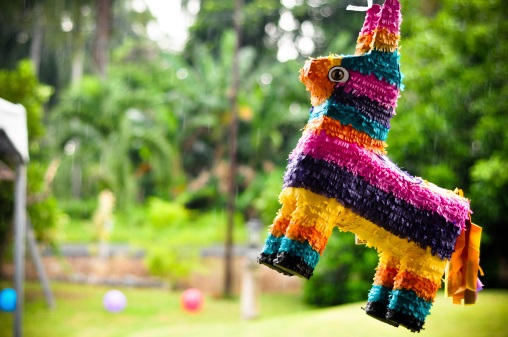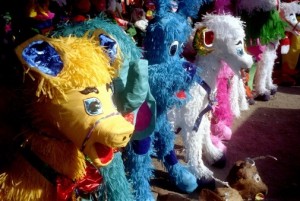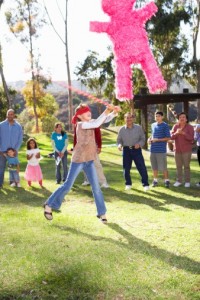Cinco de Mayo: A Brief History of the Piñata
 Cinco de Mayo is just a few days away and, as Americans, there’s no holiday we won’t celebrate to honor our mixed culture. When we think of celebrating Cinco de Mayo and Mexican heritage, margaritas and guacamole come to mind as well as piñatas — those fun, candy-stuffed papier-mache animals kids beat with sticks until they explode. It’s a unique tradition, so we wanted to find out about how piñatas came about. Here’s a brief history of the piñata.
Cinco de Mayo is just a few days away and, as Americans, there’s no holiday we won’t celebrate to honor our mixed culture. When we think of celebrating Cinco de Mayo and Mexican heritage, margaritas and guacamole come to mind as well as piñatas — those fun, candy-stuffed papier-mache animals kids beat with sticks until they explode. It’s a unique tradition, so we wanted to find out about how piñatas came about. Here’s a brief history of the piñata.
Chinese Chachkes According to Celebrating Latino Folklore: An Encyclopedia of Cultural Traditions, there are two paths piñatas followed to become a Mexican symbol of celebration. The first path was via China. During a visit to China in the 1300s, Marco Polo allegedly observed Chinese people fill elaborately decorated figures of animals filled with seeds. They then hit the figures with brightly colored sticks until they broke and spilled the seeds. Marco Polo brought the idea back to Italy where the animals evolved into decorated clay pots called “pignattas” which means “fragile pots.” The idea became a Lenten tradition and spread across Europe all the way to Spain.
 Missionary Method Spanish missionaries are credited with bringing the tradition to Mexico in the 1500s. They used the colorful clay pots to attract the indigenous people to Christian ceremonies. What the missionaries didn’t know was the indigenous people already had a similar tradition of their own. It was used in an Aztec ceremony to honor the god of war. A a clay pot was hung from a pole and smashed with a club and the treasures inside were considered an offering to the god. Mayans are the ones who came up with the blindfolding element that makes the piñata game interesting — almost as interesting as how the missionaries used piñatas to instill fear in the indigenous people. They decorated the piñatas to make them scary and frighten the tribes into converting to Christianity.
Missionary Method Spanish missionaries are credited with bringing the tradition to Mexico in the 1500s. They used the colorful clay pots to attract the indigenous people to Christian ceremonies. What the missionaries didn’t know was the indigenous people already had a similar tradition of their own. It was used in an Aztec ceremony to honor the god of war. A a clay pot was hung from a pole and smashed with a club and the treasures inside were considered an offering to the god. Mayans are the ones who came up with the blindfolding element that makes the piñata game interesting — almost as interesting as how the missionaries used piñatas to instill fear in the indigenous people. They decorated the piñatas to make them scary and frighten the tribes into converting to Christianity.
Dreaded Decor Christian piñatas are the piñatas that aren’t in the shape of animals but rather seven-pointed stars. Each point represents one of the seven deadly sins and the candy inside represents temptations. The stick used to maim the piñata and the person wielding the stick are symbols of the faith that can destroy evil. Now piñatas are commonly made in the shape of donkeys — it became a tradition for the festival for Our Lady of Guadalupe because the donkey is what carried the Virgin Mary to Bethlehem where she gave birth to Jesus.
Piñatas don’t carry as much religious weight as they used to. Now they’re mostly used as decoration for adult Cinco de Mayo parties and a fun way to distribute candy at kids’ birthday parties.
The Lakeside Collection can help you celebrate just about any holiday! From gifts to goodies to stuff in your piñatas, shop Lakeside for great products at great deals.










